
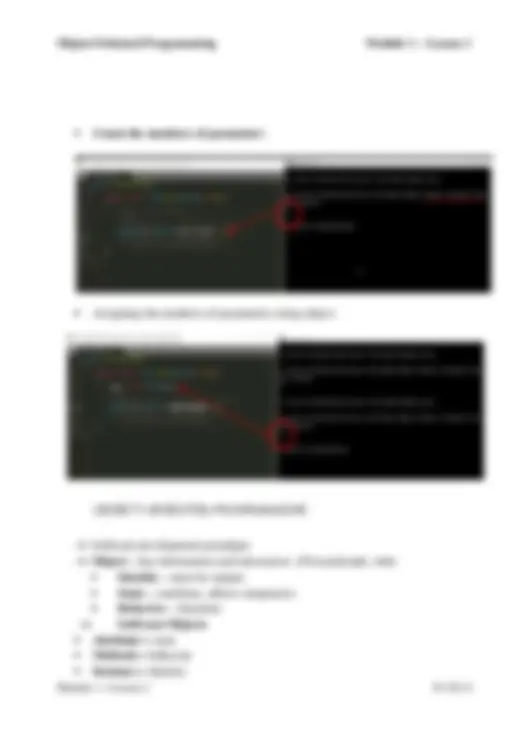
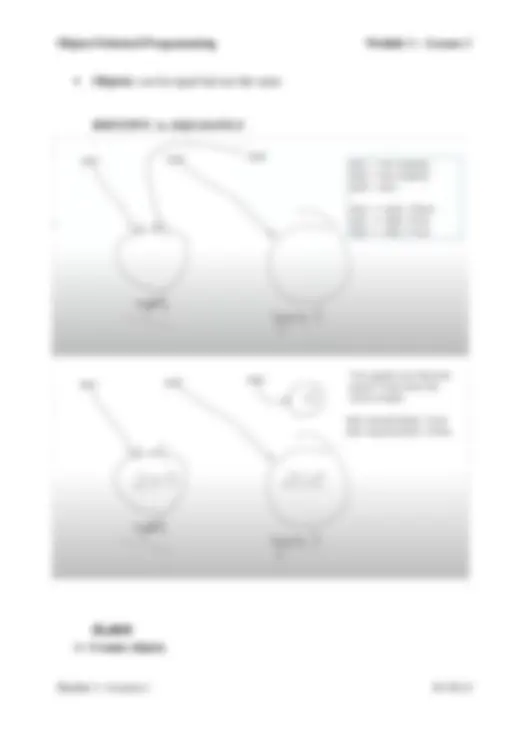
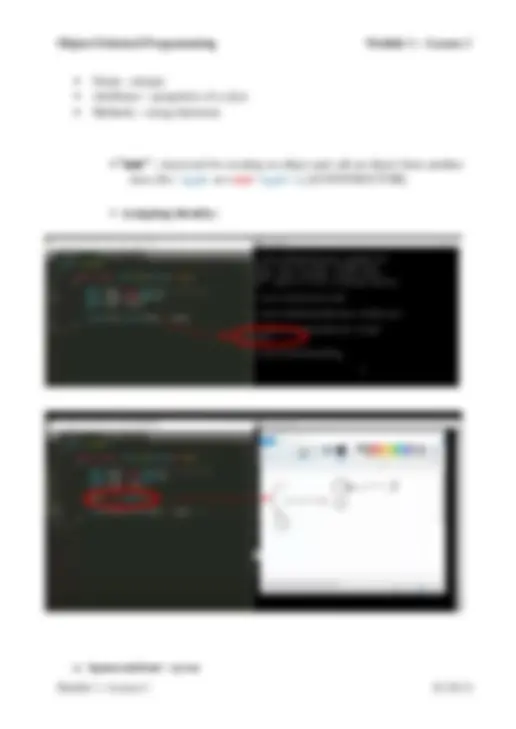
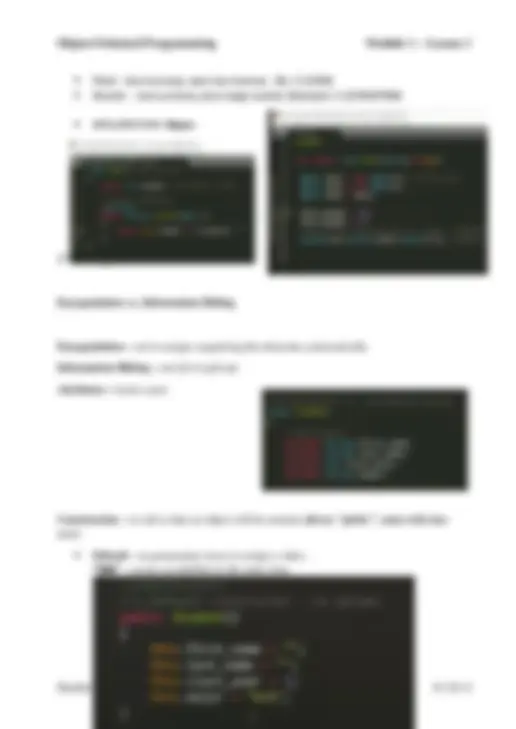
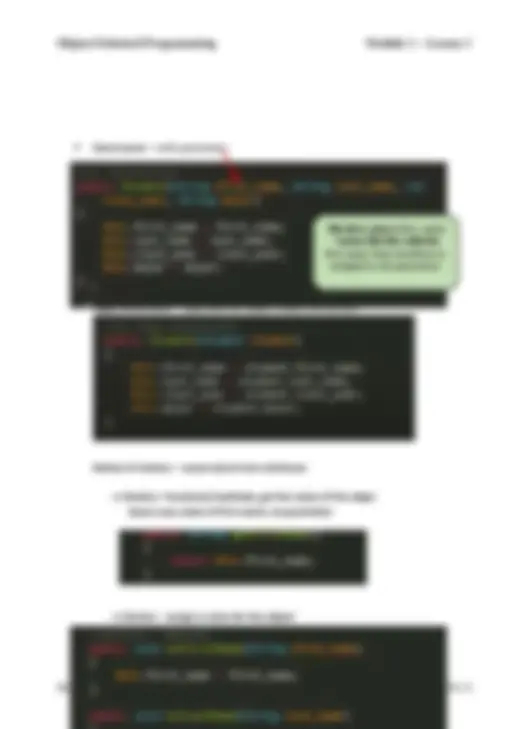

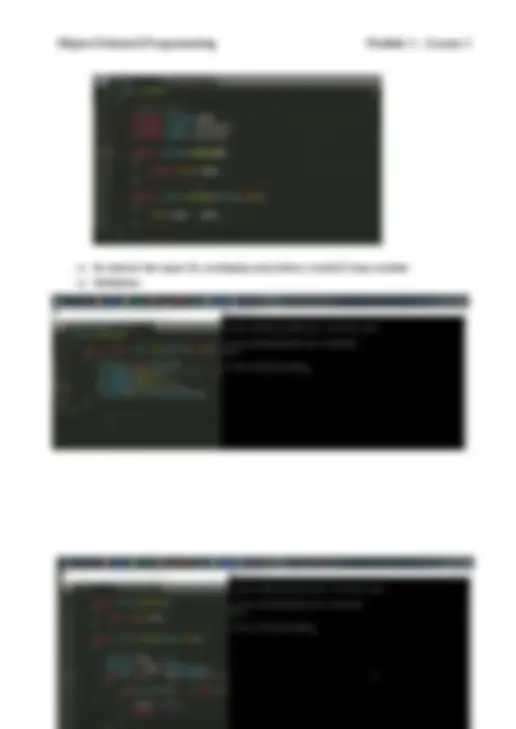

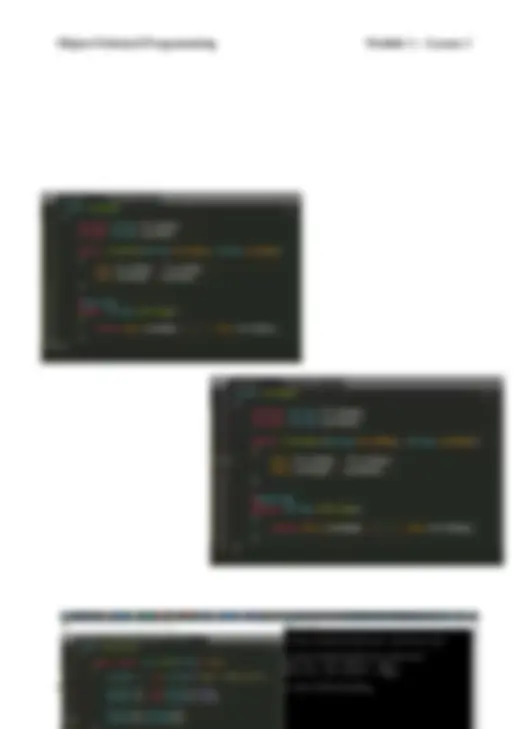

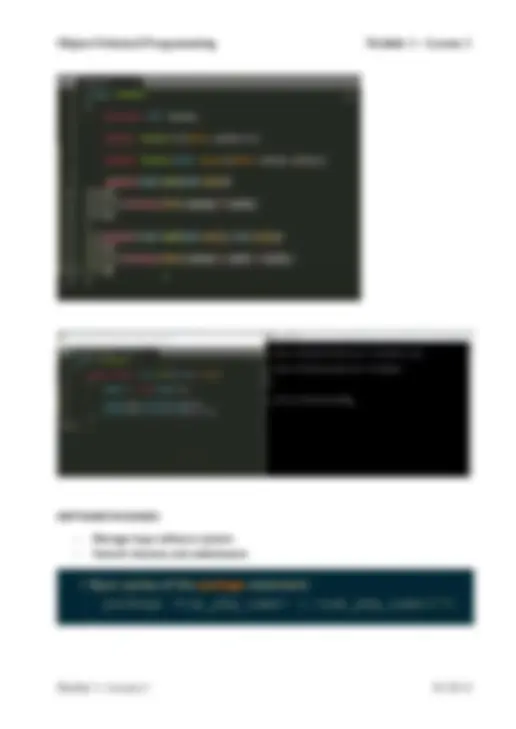


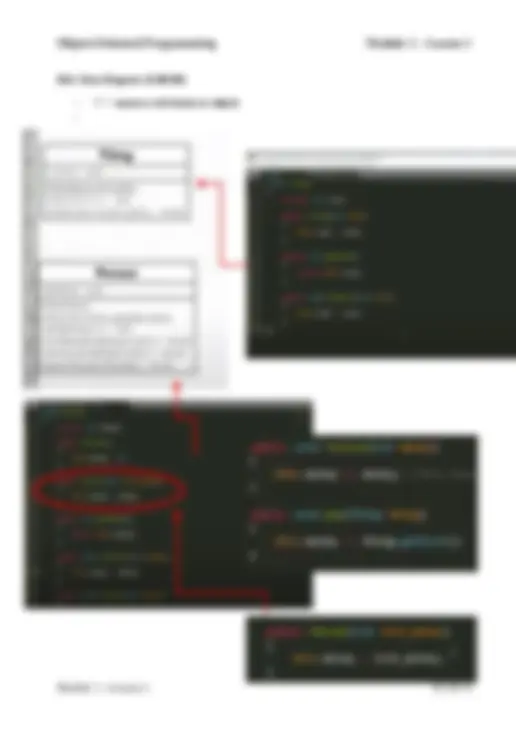
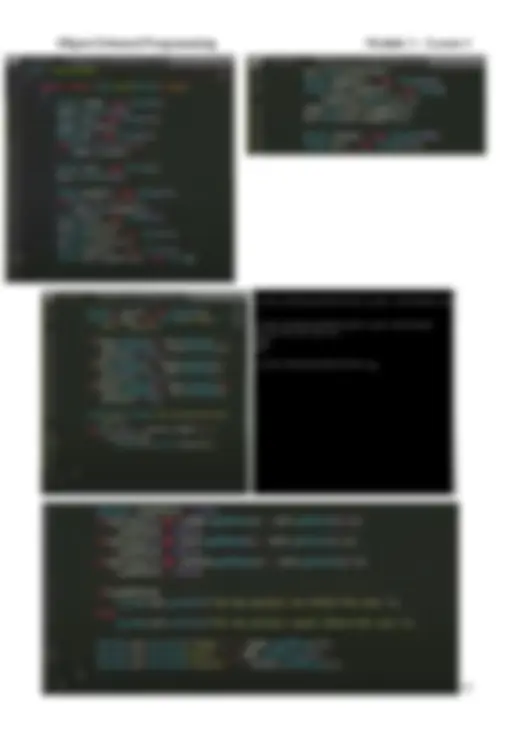



Study with the several resources on Docsity

Earn points by helping other students or get them with a premium plan


Prepare for your exams
Study with the several resources on Docsity

Earn points to download
Earn points by helping other students or get them with a premium plan
Community
Ask the community for help and clear up your study doubts
Discover the best universities in your country according to Docsity users
Free resources
Download our free guides on studying techniques, anxiety management strategies, and thesis advice from Docsity tutors
An introduction to object-oriented programming using Java. It covers topics such as classes, functions, methods, constructors, access modifiers, and import statements. The document also includes code examples and explanations of syntax and terminology. suitable for beginners and provides a foundation for further study of object-oriented programming.
Typology: Lecture notes
1 / 24

This page cannot be seen from the preview
Don't miss anything!

















→ Copy parameter of another object Note: DATA ABSTRACTION
→ To restrict the input: Ex. to display only letters, invalid if may number → Validation
Arguments =; values that is passed; call Parameters = terms that we defined as rules in the; implement the function
→ CLASS DIAGRAM into CODE Constructor – only called once per object Setter – can be called multiple times for an existing object
To round off: (Ex. 100.0) → ACCESS MODIFIERS